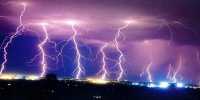Palaeontologists believe that after removing a nearby boardwalk, Utah officials drove over a valuable fossil site, perhaps irreversibly destroying preserved dinosaur footprints and animal tracks. According to insiders speaking to Gizmodo, these ancient relics are exceedingly fragile and difficult to discern, but they contain more than 200 dinosaur tracks left by ten different species. The Center for Biological Diversity (CBD) has since sent a cease-and-desist letter to the Utah office of the US Bureau of Land Management, requesting that the destruction of Mill Canyon Dinosaur Tracksite in Moab be halted immediately.
The alleged devastation is the consequence of the demolition of a weathered wooden boardwalk that was built roughly six years ago and was declared a “trip hazard” by the city. Heavy machinery is claimed to have driven over an important archaeological site in the process. The site is “one of the most important early Cretaceous tracksites in the world,” according to the Bureau, and visitors should “avoid stepping directly on the track-bearing surface at all times.”
In a statement, Patrick Donnelly, Great Basin director at the CBD, said, “I’m tremendously horrified that the BLM has apparently destroyed one of the world’s most valuable paleontological riches.” “This callous disrespect for valuable historical relics is deplorable. It definitely brings the Bureau’s competence as a land-management organization into doubt.”
The Utah BLM said it is “committed to balancing resource protection and public access to the Mill Canyon Dinosaur Tracksite, and other public lands managed by the Moab Field Office, which continue to receive high visitation” in a statement sent to various media outlets, including Gizmodo and Fox News. The Moab Field Office is aiming to improve public safety by installing an improved boardwalk that will protect the site’s natural treasures. Heavy equipment is present during the attempt, although it is never used in the protected area.”
While the Bureau continues to reject reports of site devastation, evidence has emerged that heavy machinery, including a backhoe, has drove over the tracksite, causing 20-30% surface degradation, according to Twitter sources. Although it is yet unclear whether this is due to BLM operations, it is clear that a serious error has occurred. The site is still a unique piece of archaeological significance, and BLM Utah wants to keep it open to the public.
The BLM approved the replacement of the wooden boardwalk with a more robust concrete and steel replacement in 2021, however, it is uncertain whether the plans would be carried out given the recent alleged site devastation. This isn’t the first time motorists have failed to show adequate attention to ancient monuments of unrivaled importance. To avoid paying a toll, a truck driver allegedly violated signals and drove across Peru’s iconic Nasca lines in February 2018. A pick-up truck collided with one of Rapa Nui’s (Easter Island) famous moai statues in March 2020, “seriously injuring” the treasured cultural artifact.












